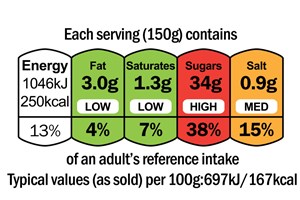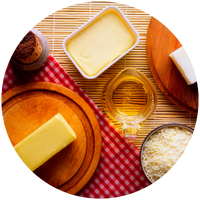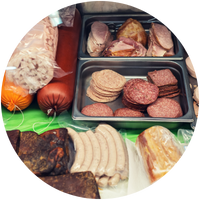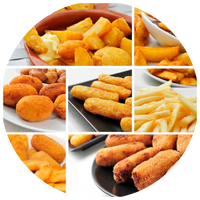
Low Fat / Low Calorie Diet
This approach to weight loss follows general healthy eating guidelines, focusing on reducing fat intake.
Since fat has the most calories per gram (9kcal), cutting back can help lower your calorie intake. It can also help reduce cholesterol, which in turn lowers the risk of heart disease.
The main types of fat are:
Saturated fat:
- Found in animal products (meat, dairy) and some oils (palm, coconut). Limit these as they raise cholesterol.
Unsaturated fat:
- Found in plant oils and fish. Replacing saturated fat with unsaturated can lower heart disease risk.
Mono & Polyunsaturated fats:
- Healthier fats found in foods like salmon, nuts, olives, and avocado. These should replace saturated fats in your diet. A small amount of fat is essential for energy, vitamin absorption and is a source of fatty acids.
Wholegrain foods
Oats, wholegrain bread, pasta and rice.
Fish
White fish - haddock, cod. Oily fish - salmon, mackerel & sardines.
Vegetables
Try to eat at least 5 portions a day.
Lean meats
Skinless chicken, turkey. Pork & beef with visible fat removed.
Lentils, beans & pulses
Source of lean protein, low fat & high fibre.
Dairy
Opt for low fat - skimmed milk, reduced fat yoghurts & cheese.
Tips for low fat/calorie diet
As a guide, men need around 2,500kcal a day to maintain a healthy body weight, and women need around 2,000 kcal a day.
To lose 1–2 lbs (0.5 to 1 kg) per week you need to reduce your calorie intake by 500–600 kcal per day.


A great weight loss tip is to keep a food diary. Apps like MyFitnessPal make it easy, letting you set goals and track the full nutritional breakdown of what you eat.

Apps like Change4Life have a food scanner that lets you scan barcodes to see how much saturated fat is in a product, helping you make healthier choices!
Tips to reduce your fat intake
At home
- Grill, bake, or steam instead of frying or roasting.
- Measure oil with a teaspoon to control usage.
- Trim visible fat from meat and remove poultry skin before cooking.
- Reduce meat intake by adding more vegetables or using beans and pulses to bulk up dishes.
- Use reduced-fat spreads made from olive or sunflower oil instead of butter.
- Swap beef mince for turkey or Quorn mince.
Eating out
- Ask for dressings or sauces on the side to control portions.
- Avoid items labeled "fried, sautéed, roasted, or crispy," as they're often cooked in oil.
- Choose tomato-based sauces over creamy or cheesy ones.
Food labelling


BE AWARE!
Foods advertised as low fat can be high in sugar, so always check the label—anything over 22.5g of total sugar per 100g is considered high.










